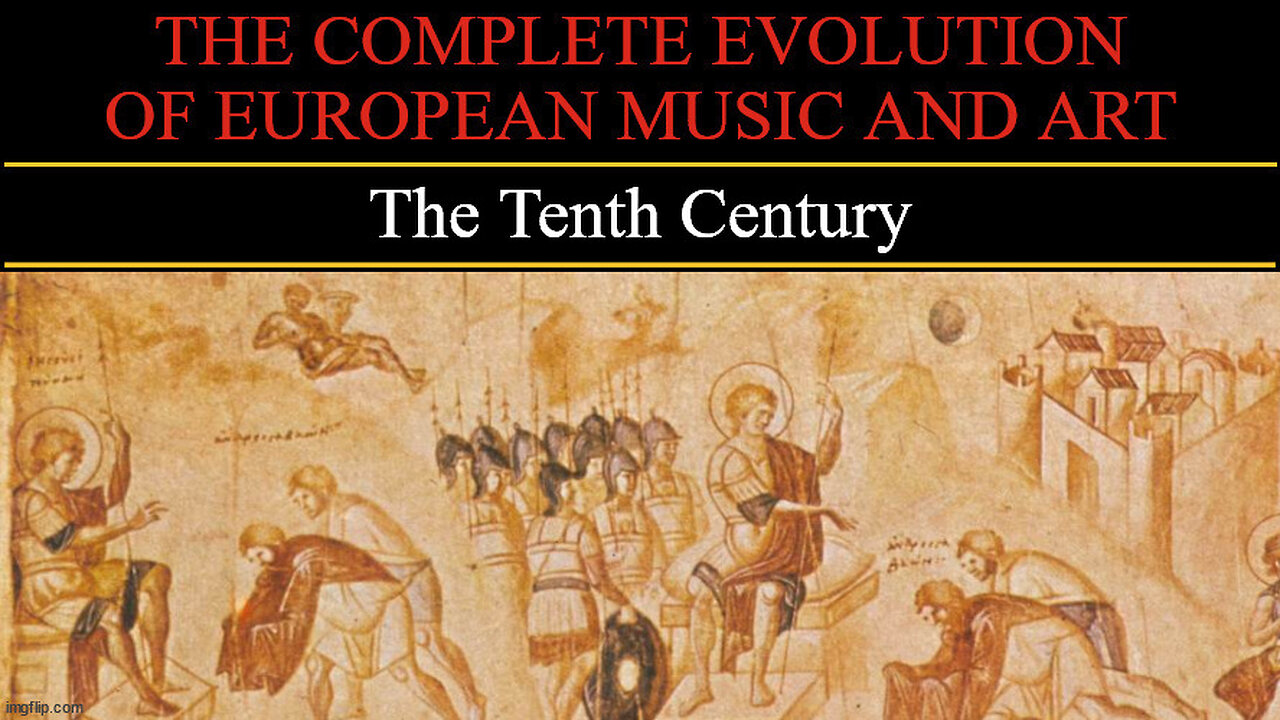Premium Only Content

Timeline of European Art and Music - The Tenth Century
Music
0:00 - Early 900s - Unknown artist and title - Probably of German origin. Earliest known practical piece of polyphonic music, recently discovered in 2014 within a British Library manuscript in London. Origin of north-west Germany, somewhere around Paderborn or Düsseldorf
1:12 - 900s - Unknown (Greek) - O Aggelos Eboa, The Angel Cried
2:30 - 900s - Unknown, possibly Odo of Cluny (French) From the Musica Enchiriadis, an anonymous musical treatise of the 9th century. It is the first surviving attempt to set up a system of rules for polyphony in western art music.
6:17 - 900s - Unknown (Spanish) - Attende Domine (Hear Us, O Lord)
A Christian liturgical chant for the season of Lent, referred to in English as the Lent Prose. The themes of this hymn are the sinfulness of man and the mercy of God, a theological concept emphasized during Lent.
9:43 - 900s - Unknown (Greek origin) - Kyrie eleison (Lord, have mercy)
The prayer, "Kyrie, eleison," "Lord, have mercy" derives from a Biblical phrase. Greek ἐλέησόν με κύριε
"have mercy on me, Lord" is the Septuagint (the Greek version of the Hebrew bible) translation of the phrase חָנֵּנִי יְהוָה found often in Psalms ( 6:2, 9:13, 31:9, 86:3, 123:3). The way it is performed has changed repeatedly throughout history.
12:26 - 900s - Unknown (Spanish) - Song of the Sibyl
A liturgical drama and a Gregorian chant, the lyrics of which comprise a prophecy describing the Apocalypse, which has been performed in churches on Majorca (Balearic Islands, Spain) and Alghero (Sardinia, Italy), and some Catalan churches, in the Catalan language on Christmas Eve nearly uninterruptedly since medieval times.
-
 10:04
10:04
Space Ice
6 hours agoThe Movie Silent Hill Is Like Resident Evil Without The Good Parts - Worst Movie Ever
49.7K12 -
 5:49
5:49
Hannah Barron
1 day agoRedneck Euro Mount
40K22 -
 32:34
32:34
hickok45
11 hours agoSunday Shoot-a-Round # 268
30.7K16 -
 27:33
27:33
The Finance Hub
21 hours ago $17.29 earnedBREAKING: ALINA HABBA JUST DROPPED A MASSIVE BOMBSHELL!!!
67.7K115 -
 40:23
40:23
PMG
1 day ago $2.17 earnedHannah Faulkner and Dr. Michael Schwartz | EXPOSING BIG PHARMA
40.2K3 -
 18:55
18:55
GBGunsRumble
23 hours agoGBGuns Range Report & Channel Update 15FEB25
29.7K2 -
 13:31:32
13:31:32
iViperKing
1 day agoGood Times + Good Energy Ft. Whez.. #VKGFAM #RRR
113K15 -
 12:24
12:24
Winston Marshall
2 days agoWOAH! Bannon just Revealed THIS About MUSK - The Tech-Right vs MAGA Right Civil War Ramps Up
237K319 -
 7:33:46
7:33:46
Phyxicx
23 hours agoHalo Night AND Raid & Rant with the FF14 Guild on Rumble! - Go Follow all these great guys please! - 2/15/2025
157K7 -
 10:42:19
10:42:19
Reolock
1 day agoWoW Classic Hardcore (LVL 60) | RAID DAY | Rumble FIRST HC Raid
102K5